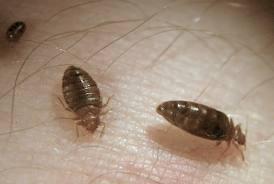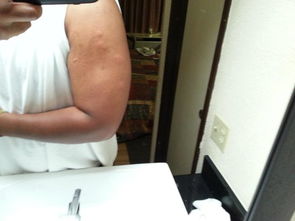
Flea and Bed Bug Bites: A Comprehensive Guide
Dealing with flea and bed bug bites can be an incredibly frustrating experience. These tiny pests can cause severe itching, redness, and discomfort. In this detailed guide, we will explore everything you need to know about flea and bed bug bites, including their symptoms, causes, treatment, and prevention methods.
Understanding Flea and Bed Bug Bites

Flea and bed bug bites are often mistaken for one another due to their similar symptoms. However, there are distinct differences between the two. Flea bites are usually found on the legs, ankles, and feet, while bed bug bites are commonly found on the arms, shoulders, and neck.
Flea bites are typically smaller and more pinpointed, while bed bug bites tend to be larger and more raised. Additionally, flea bites often appear in clusters, whereas bed bug bites may be scattered or grouped together.
Causes of Flea and Bed Bug Bites

Fleas are small, wingless insects that feed on the blood of mammals and birds. They are often found in pets, such as dogs and cats, but can also infest humans. Bed bugs, on the other hand, are nocturnal parasites that feed on the blood of humans and animals. They are commonly found in beds, furniture, and other hiding spots in homes and hotels.
Both fleas and bed bugs are attracted to warmth and carbon dioxide, which is why they often bite exposed skin while a person is sleeping. Once they have fed, they will return to their hiding spots to digest their meal.
Symptoms of Flea and Bed Bug Bites

The most common symptoms of flea and bed bug bites include:
| Symptom | Flea Bites | Bed Bug Bites |
|---|---|---|
| Itching | Severe | Severe |
| Redness | Common | Common |
| Swelling | Occasional | Occasional |
| Clustered Bites | Common | Less Common |
| Scattered Bites | Less Common | Common |
It’s important to note that some individuals may not experience any symptoms from flea or bed bug bites, while others may have severe allergic reactions.
Treatment of Flea and Bed Bug Bites
Most flea and bed bug bites will heal on their own within a few days. However, there are several treatment options available to alleviate symptoms and prevent infection:
- Over-the-counter remedies: Antihistamines, hydrocortisone cream, and calamine lotion can help reduce itching and inflammation.
- Prescription medications: In some cases, a doctor may prescribe oral antihistamines or corticosteroids to treat severe allergic reactions.
- Home remedies: Applying a paste of baking soda and water or a cold compress can also help soothe the skin and reduce itching.
It’s important to keep the affected area clean and dry to prevent infection. If you notice signs of infection, such as increased redness, swelling, or pus, seek medical attention immediately.
Prevention of Flea and Bed Bug Bites
Preventing flea and bed bug bites involves a combination of home maintenance and pest control measures:
- Regular vacuuming: Vacuuming your home regularly, especially in areas where pets sleep or spend time, can help remove fleas and bed bugs.
- Sealing cracks and crevices: Bed bugs can hide in tiny cracks and crevices, so it’s important to seal these areas to prevent infestations.
- Washing bedding and clothing: Regularly washing your bedding and clothing in hot water can kill fleas and bed bugs.







